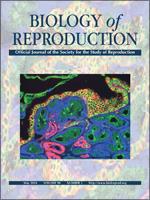In the Syrian hamster (Mesocricetus auratus), an animal that displays testicular regression due to short photoperiod, germ cells are removed by apoptosis during this process and the apoptotic remains are phagocytized by Sertoli cells. The aim of this work was to investigate morphologically whether the testicular regression process due to short photoperiod leads to the apoptosis of Sertoli cells, and whether, during testicular regression, the elongated spermatids are eliminated through phagocytosis by Sertoli cells. To this end, we studied testis sections during testicular regression in Syrian hamster subjected to short photoperiod by means of several morphological techniques using conventional light microscopy (hematoxylin and eosin [H&E], semi-thin section vimentin, immunohistochemistry, SBA lectin, and TUNEL staining), fluorescence microscopy, and transmission electron microscopy (TEM). H&E and semi-thin sections identified Sertoli cells with a degenerated morphology. Greater portion of Sertoli cells that were positive for TUNEL staining were observed especially during the mild regression (MR) and strong regression (SR) phases. In addition, TEM identified the characteristic apoptotic changes in the nucleus and cytoplasm of Sertoli cells. Moreover, during testicular regression and using light microscopy, some elongated spermatids were seen in basal position next to the Sertoli cell nucleus. This Sertoli phagocytic activity was higher in MR and SR phases. TEM confirmed this to be the result of the phagocytic activity of Sertoli cells. In conclusion, during testicular regression in Syrian hamster due to short photoperiod, when germ cells are known to be lost through apoptosis, there is morphological evidences that Sertoli cells are also lost through apoptosis, while some elongated spermatids are phagocytized and eliminated by the Sertoli cells.
How to translate text using browser tools
9 April 2014
The Death of Sertoli Cells and the Capacity to Phagocytize Elongated Spermatids During Testicular Regression due to Short Photoperiod in Syrian Hamster ( Mesocricetus auratus)
Vicente Seco-Rovira,
Esther Beltrán-Frutos,
Concepción Ferrer,
Francisco José Sáez,
Juan Francisco Madrid,
Luis Miguel Pastor
ACCESS THE FULL ARTICLE

Biology of Reproduction
Vol. 90 • No. 5
May 2014
Vol. 90 • No. 5
May 2014
Apoptosis
photoperiod
Sertoli cells
spermatid
testis




